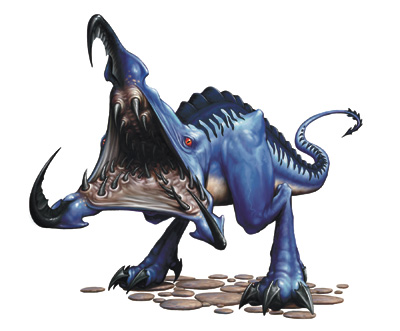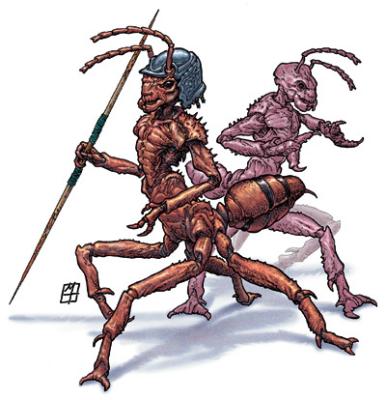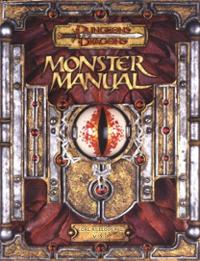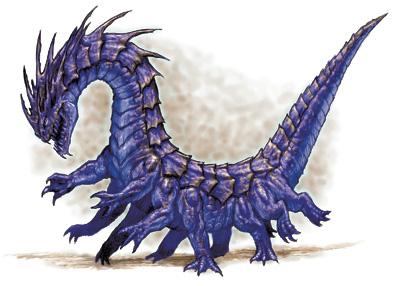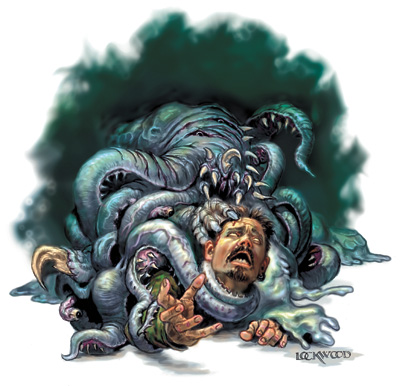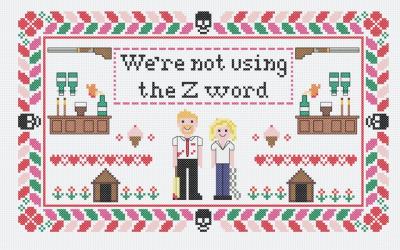More Monsters from the Monster Manual.
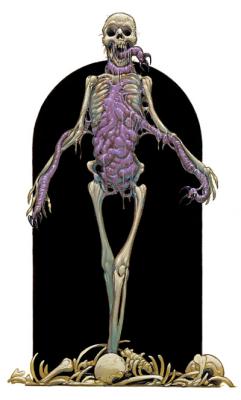
The Mohrg looks both icky and also pretty cool. It’s a human skeleton whose chest is filled with purple worms. It is however not a worm riding a human skeleton, but really a single undead creature that is created from a murderer who died unpunished. And it seems to be implied that it is the evil soul that makes the criminal return to unlife and not the work of a necromancer, which really raises the question where these worms are coming from? Perhaps the artist got unclear instructions what it should look like. A morg attacks both with its hands and its tongue, which in this illustration is also a worm. The tongue causes paralysis in living creatures, while it can also use the Improved Grab ability when it hits with its arms. Since humanoid ceatures never have the Improved Grab ability, I would guess the best way to describe it in combat would be to have the worms that are wrapped around the arm bones wrap around the target and hold it. The players sure would appreciate it. A mohrg is much more powerful than a skeleton and other than in appearance has nothing at all in common with those. When a creature is killed by a mohrg it raises as a simple zombie, but only after one to four days. Which in completely useless in combat, and you would have to add a lot of zombies to make a fight against a CR 8 monster more challenging. Considering all this, the writer who created the mohrg probably had much more in mind for it than just being a stronger skeleton to jump out from behind a corner and be killed in two to three rounds. This creature is really much better suited as the centerpiece of an entire adventure. One to four days is quite some time in which a lot can happen to a corpse. The mohrg might take it back to its lair and wait for it to rise, or it might be left where it fell. Or it might even have been found and already burried in the graveyard or being prepared for burrial. Suddenly, zombies! Zombies everywhere! A great investigation adventure which at the end will come together with a fight against the mohrg itself. Which being a murderer in life, should also have some backstory to go along with. This is exactly the kind of hidden information I am looking for in these books. Monsters that are much more than something to encounter standing in a dungeon room and to be forgotten four rounds later, but are actually made to have adventures created around them. And I must ask, why doesn’t this book spell this out?! This book is 15 years old, I had it since it first came out, and I have been using it countless times. And only now, carefully disecting each obscure monster and searching for tiny details that might be used as plot hooks, did I ever notice it? “1d4 days” is only seven characters, but they make all the difference. Why hide it? Would it have been so hard to add two more sentences to the description? Imagine if they had made that effort for all monsters in this book? D&D would be a completely different game than it is today and not the rules obsessed tactical combat simulation that it became.
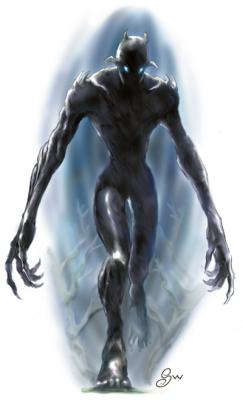
Do I have to say it again? I probably shouldn’t, but I’ll do anyway: This Nightshade illustration is fucking awesome! Like almost all Sam Wood illustrations in this book. The perspective makes it clear that this is a not a human sized guy and when you check the description it’s fucking huge. Not just big, but size category: Huge. A 6 meter tall bastard of pure darkness with blue glowing eyes. Nightshades come in three variants, the nightwing (huge bat), nightwalker (huge man), and nightcrawler (gargantuan worm) and are from the Known World setting of BECMI. Which I think is the reason for its biggest flaw. In BECMI, character levels go all the way up to 36, almost twice as high as the maximum of 20 in the 3rd edition core rules. Unfortunately, when converting the creature this difference was apparently not accounted for making the nightshades pretty high level creatures with a CR of 16 for the nightwalker. Which means I never got any opportunity to use it. Let me get my soap box, I think I need it today. I hate high level play in D&D. My campaigns usually don’t go any longer than 3 years and almost all of them start at low levels, because I very often get lots of people to play who never played any RPGs before. And since I don’t run dungeon crawling grind-fests, I’ve never seen any PCs of a level higher than 8th, either as GM or as player. And the way D&D is set up, that meant a huge amount of content never could be used at all. Like this cool badass bastard. Today I know better and could just rebuild him as a CR 8 creature and use that, but I used to be a young and stupid GM and that never really occured to me. I am afraid I don’t have much to say about the monster itself. There isn’t really any description what it is and what it does, and the abilities don’t seem interesting either. But damn, it looks cool.
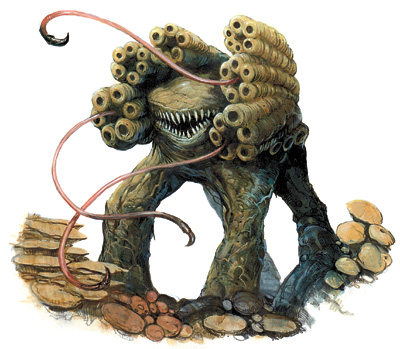
The Phantom Fungus looks very weird and kinda stupid in this illustration. Which doesn’t actually matter because it’s completely invisible almost the entire time. The stats for this monster are really very simple. It’s medium size, has animal intelligence, and is only CR 3. It’s natural invisibility is the only ability it has. Actually, you could just ignore the illustration since none of those things on its back or the tentacles coming out of them are doing anything. It is permanently invisible, walks up to you, and bites. Clearly the artist thought that this is totally boring and painted something much more interesting, if stupid looking, instead. The invisibility really is its only thing. I think the best idea is probably to just take this ability and add it to other creatures and make some really interesting monsters. Continue reading “Fantasy Safari: Monster Manual (D&D 3rd Ed.), Part 3”

